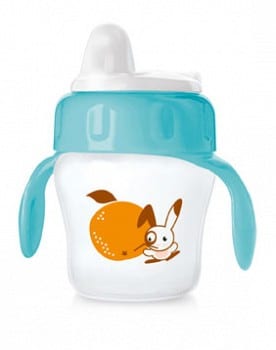Have you noticed the number of products lately that claim to be BPA-free? This must be a good thing if it’s missing, right? But do you know the risks BPA raises for you and your family?
Bisphenol-A (BPA), is an industrial chemical that has been used in the manufacture of clear, hard plastics and food containers since the 1960s. It’s also a known environmental estrogen, or endocrine-disrupting chemical (EDC). It has recently come under increased scrutiny of many federal agencies because of its harmful effects on human development and reproduction.
BPA Everywhere
Until very recently, BPA was common in baby bottles and nipples, sippy cups, teething rings, plastic spoons, water bottles and the plastic liners in formula cans. Soft drink cans and food cans are also lined with plastic containing BPA, as are plastic food and drink containers.
The Centers for Disease Control and Prevention (CDC) says BPA is present in our bodies, with the greatest loads measured in children. It’s even been found in umbilical blood from newborns. Just 2 years ago, the National Toxicology Program Center for the Evaluation of Risks to Human Reproduction became concerned about BPA’s effects on human health and development. The FDA and other federal agencies joined in on the increased surveillance and several states have now taken stands against BPA, even going so far as banning it in baby bottles and formula cans (Oregon, Connecticut, Minnesota, Washington and California so far).
Avoiding BPA
In January 2010, the FDA reversed a statement it made in 2008 saying that small amounts of BPA were safe and instead recommended that consumers take steps to avoid BPA because the chemical has been linked in research to more than 24 health complications.
Last December, two congressmen introduced The Endocrine Disruption Prevention Act to funnel research into regulatory action to safeguard our health from the effects of dangerous chemicals. Of course, there is strong opposition from retailers, manufacturers, and chemical corporations and organizations. But, as a result of efforts to ban BPA, many manufacturers and stores changed their products and began offering BPA-free versions of popular items, including baby products.
Babies and young children are more susceptible to a toxic chemical and its effects because they consume more liquid per body weight and a have higher daily exposure by weight than adults; they have more hand-to-mouth behavior that introduces chemicals into their bodies, and a reduced capacity to eliminate toxic chemicals.
Experts now say the only safe baby is a BPA-free baby. When buying plastics for use around your baby, purchase plastic products that are specifically BPA-free or use glass products instead and look for ways to reduce your exposure to BPA from cans and jars that have BPA in the linings.






Comments are closed.